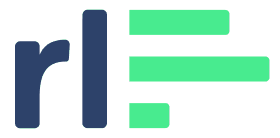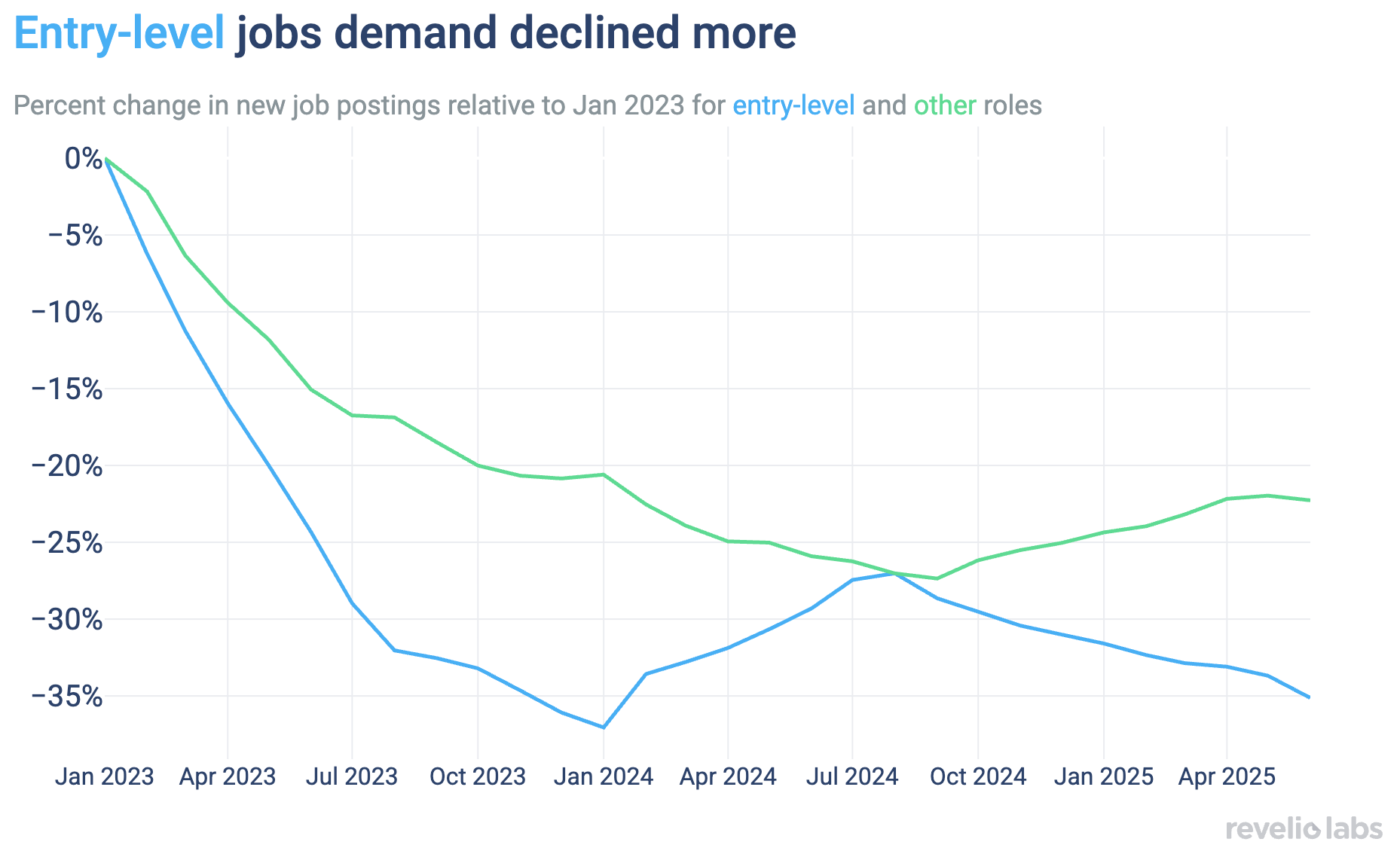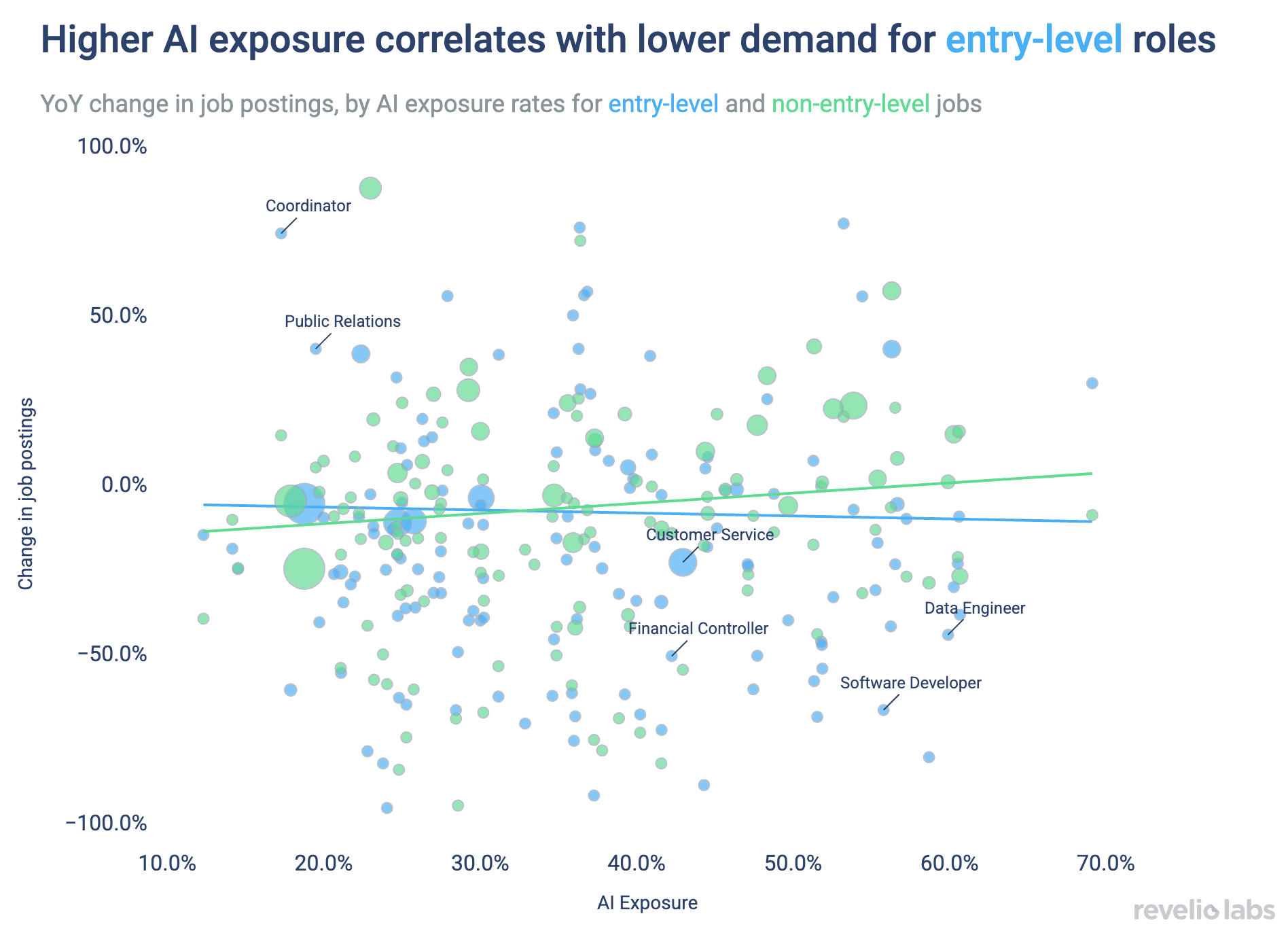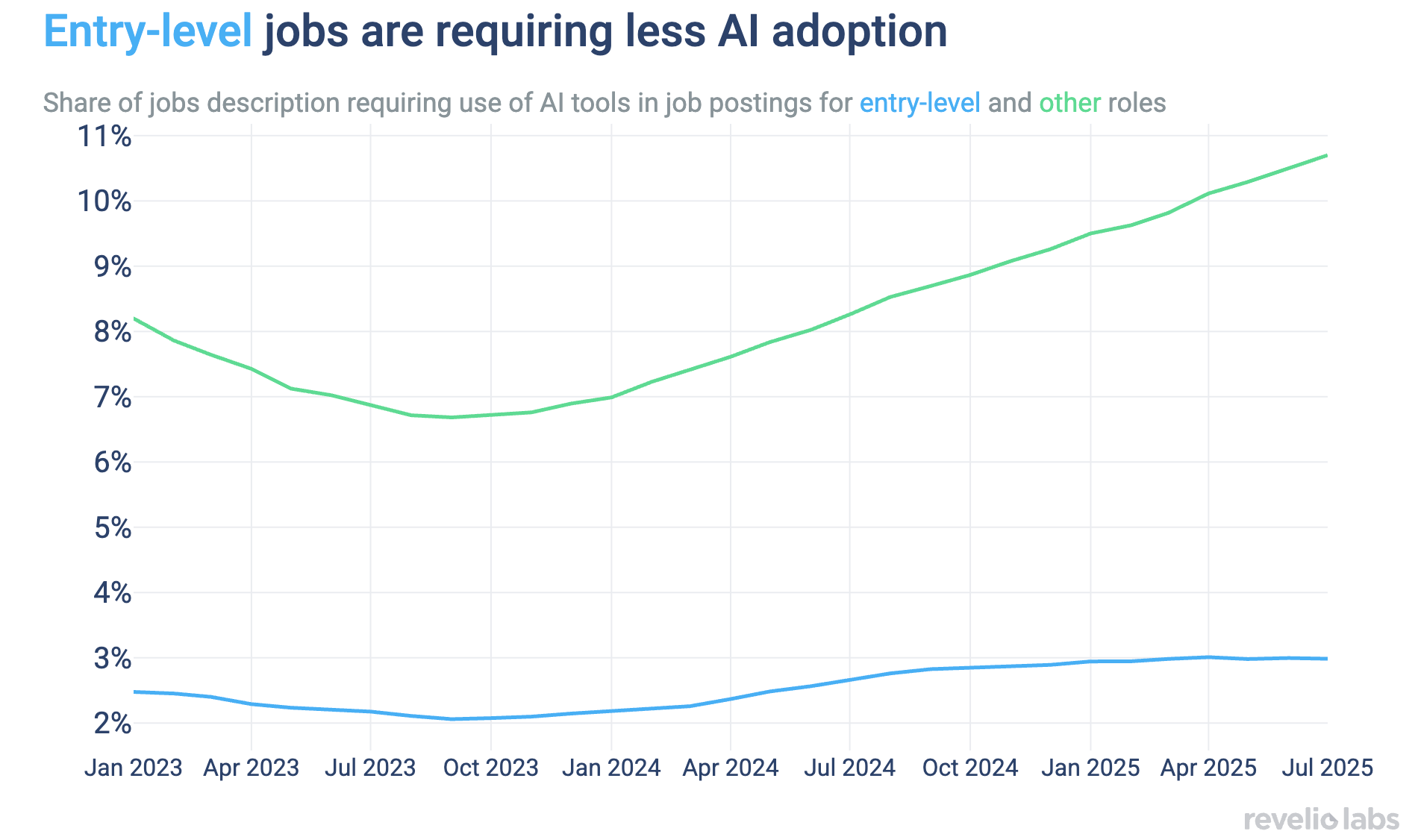Is AI responsible for the rise in entry-level unemployment?
AI drives a wedge between junior and senior hiring

Entry-level jobs for university graduates have experienced a sharper decline than non-entry-level roles. Four out of the five industries that usually hire the largest number of graduates have seen declines in demand for entry-level roles.
While AI certainly does not explain the whole decline in entry-level demand, we are seeing that highly AI-exposed entry-level roles have seen the largest decline. Controlling for industry and time trends, a 10 percentage point increase in AI exposure is associated with an 11% drop in demand for entry-level roles. By contrast, it aligns with a 7% increase in demand for non-entry-level roles.
Job postings for entry-level roles have seen much lower growth in requiring the use of AI on the job, compared to more senior level roles. Employers are missing an opportunity to quickly upskill entry-level workers when the use of AI tools is not required or encouraged.
The debate on whether AI is negatively affecting entry-level graduate jobs is everywhere, with the two sides of the debate firmly sticking to opposing arguments. On the one side, doomsayers believe that AI is replacing large swaths of entry-level roles, quoting tech CEOs on grand statements about AI and their future HR strategies. On the other side are the skeptics who say that AI has absolutely nothing to do with the current decline in entry-level graduate jobs, attributing all shifts to macroeconomic and cyclical factors.
Absent from the debate is a real look at the data, as well as some nuance. In collaboration with Bloomberg, we shed light on the issue by looking at how demand for entry-level jobs has changed and whether a job’s AI exposure makes a difference in whether entry-level openings in that role have changed.
To set the scene, we take a look at how demand for graduate jobs has changed in the past 18 months–that is, entry-level jobs in roles that typically require at least some college. The demand for workers has declined across the board. But while non-entry level roles have been making a slight recovery, entry-level jobs have been diverging and are diving down further by over 35% fewer jobs openings than in January 2023, equalling over 100,000 fewer new monthly job postings.


Where is this decline concentrated? When we look at the five industries that typically hire the largest share of four-year college graduates, we see that four of them have experienced declining entry-level demand for the 2024/2025 hiring season compared to the year before. Unsurprisingly, the tech industry has seen the sharpest decline in entry-level demand by about 25%. AI skeptics will view the overall decline of hiring in tech that coincides with higher cost of capital and greater economic uncertainty as the leading cause for the observed decline in demand for entry-level roles. After all, entry-level roles tend to make up a large share of new hires in the tech industry.
However, Revelio Labs’ rich data allows us to observe variation in hiring demand within industry by occupation, where different occupations have different levels of AI exposure. We measure AI exposure as the share of activities in a given role that can be performed by AI. How does demand for entry-level roles look when we split jobs into four categories: highly versus lowly AI-exposed, and entry- versus non-entry roles?


Highly AI exposed entry-level jobs have declined by over 40%, the most of all four categories. Meanwhile, lowly AI-exposed entry-level jobs have experienced a 33% decline. For non-entry level jobs, low-exposed jobs have declined by only 16%, and high-exposed non-entry-level jobs by 27%.
To isolate AI’s impact from cyclical declines in demand, we run a regression of job postings on AI exposure and seniority levels, controlling for a time trend, industries and months. A 10 percentage point increase in AI exposure is associated with a 7% increase in demand for non-entry level roles, but with an 11% decrease in entry-level roles. This means that comparing two roles, for example, Financial Controllers with (~40% AI exposure) to Project Administrators (~30%), demand for entry-level Financial Controllers is 11% lower than demand for entry-level Project Administrators. However, demand for non-entry-level Financial Controllers is 7% higher than demand for non-entry level Project Administrators. While the positive result for AI-exposed non-entry-level roles may seem at odds with the previous line plot, it demonstrates the power of disaggregation and controlling for time and context. With the regression analysis we are able to ask what would have happened to occupations within industries if there had not also been an economy-wide hiring slowdown.


What explains this difference in demand between highly AI-exposed entry-level and senior roles? AI adoption in job requirements provides part of the answer. When looking at average AI adoption requirements by seniority, measured by the share of job posting mentioning the use of AI tools, we find that firstly there is a huge discrepancy in levels, where AI adoption for non-entry-level roles has been at least 5 percentage points higher than for entry-level roles. Secondly, that gap has been growing. Whereas non-entry-level roles have seen increased AI adoption requirements since October 2023, that increase has been modest at best for entry-level roles.
It seems that employers aren’t trusting entry-level roles with the use of AI tools: A missed opportunity for employers, as AI can help level the playing field and is able to upskill relative novices in many areas to more expert level work output.


The data point to a growing mismatch between how employers are using AI and how they’re hiring for entry-level roles. While demand is holding up for senior positions with high AI exposure, entry-level jobs in those same roles are declining. In a world where AI is reshaping workflows and productivity, firms are leaning more on talent to adopt and deploy these tools, while leaving juniors out of the equation. The result is a bifurcation: demand grows for AI-augmented senior roles, while entry-level positions, especially in high-exposure occupations, shrink. For grads, the lesson is clear, learning to use AI tools isn’t optional. And for employers, the economics are compelling: overlooking AI at the entry level results in missed opportunities and underutilized talent. If AI can boost productivity, why not start with the largest marginal gains, entry-level hires?


